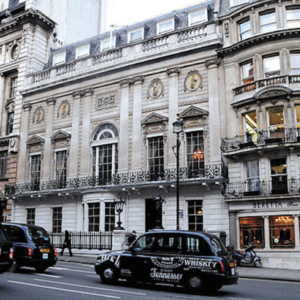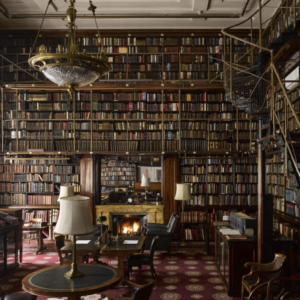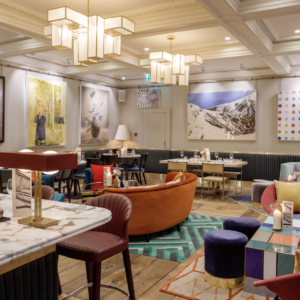
How did these Clubs come about?
In the middle of the 17th century, the fashion for coffee came from France to England, and English gentlemen got into the habit of meeting and discussing important political and economic news over a cup of coffee. Places for such appointments began to be called closed Private Clubs. Later cigars and stronger drinks were added to the options.
In 1762, the first Club appeared, which was funded by its Members. The first such institution was the Club or Bar Boodle’s, in which its founder – Mr. Boodle first starts a register its Members, obliging them to pay a fee and observe certain rules of conduct.
The familiar to us decor of Sherlock Holmes films appeared later on. Carpets, fireplaces, and upholstered chairs were needed to give an atmosphere of comfort and coziness.
A closed private Club as a cultural phenomenon arises for a fairly simple reason – the local aristocrats wanted to have a place where people of “their circle”would spend their leisure time.
The mansion of the London Club White’s, which was established in 1693, has no sign, but only an inconspicuous door and a mysterious staircase and to keep its authenticity White’s still doesn’t have an Internet website. The Club is surprisingly elegant inside and just as past times has gentlemen reading newspapers in high back leather chairs, with a tiny bar that even offers sausages from a silver platter, and a Bartender who is willing to regale visitors with stories about the members of the Club.

It is actually the Bartender who performs the most important role – to connect Members. One Member of the Club turns to him when he wants to meet another Member with whom he has not yet had the honor of being personally acquainted, and the Bartender finds the right time to arrange this meeting unobtrusively and elegantly.
Clubs Emerged founded by representatives of the intellectual elite: The Royal Society (its backbone was Engineers) and in 1824 – the Athenaeum (Scientists and Artists), which from the very beginning could boast the best library in the city. Humphrey Davy and Michael Faraday were its first Chairman and Secretary, fifty-one Nobel Laureates have been Members thus far!

The famous Brook’s club, which was opened in 1778. Its first 27 founders were very young at the time – rich and extravagant London Dandies, the average age of which did not exceed 25 years!
Becoming a Member of Brook’s became paramount for the status of any socially aware gentlemen. Being a Member of this Club meant belonging to a respected closed private Club that promoted its values and cared about the reputation of its Members. The very intention of joining the Club helped many young and hot-headed people to significantly change their behavior, because the stakes were high. Membership was an official recognition into high society for any young man.
In the first English Clubs, white and black balls were used when voting for a Candidate for membership. Members of the Club could agree with the Candidate (white ball) or refuse (black ball). The term “blackballed” (a Candidate who received a black ball) meant a lot: often, in addition to the refusal of admission to the Club, this person would also, unfortunately, lose a number of business partners, sometimes status and influence, and as a result – also his fortune!
Closed Private Clubs: current trends
In the 1980s, in the UK, the emancipation revolution brought a new wave to the Club culture. In 1985, as an” antidote “to the traditional (male) closed private Clubs in the Soho area, the” electrifying ” club The Groucho, named after Groucho Marx, appeared.
 During the Club’s heyday, its Members “openly snorted cocaine,” and some liked to talk about nowadays, the exotic behavior that made the Club so spectacular disappeared. Today, membership in Groucho is a privilege of the art and media elite. The Club’s admission committee receives thousands of applications every month.
During the Club’s heyday, its Members “openly snorted cocaine,” and some liked to talk about nowadays, the exotic behavior that made the Club so spectacular disappeared. Today, membership in Groucho is a privilege of the art and media elite. The Club’s admission committee receives thousands of applications every month.

For this privacy, the Club is valued by George and Amal Clooney, Mick Jagger, Leonardo DiCaprio, Prince William, and Princess Eugenie Victoria Elena of York.
To join the already mentioned and well-known London club White’s, you will need a recommendation from 35 Club Members!
People want to plunge into the atmosphere of relaxation and intellectual freedom, leaving for a while” overboard ” all the charms of the world of the era of digital social networks.
A closed private Club for its Members is not only a place closed from casual visitors, but also a place where it is difficult to get too, where the best friends and people of their circle are invited.
